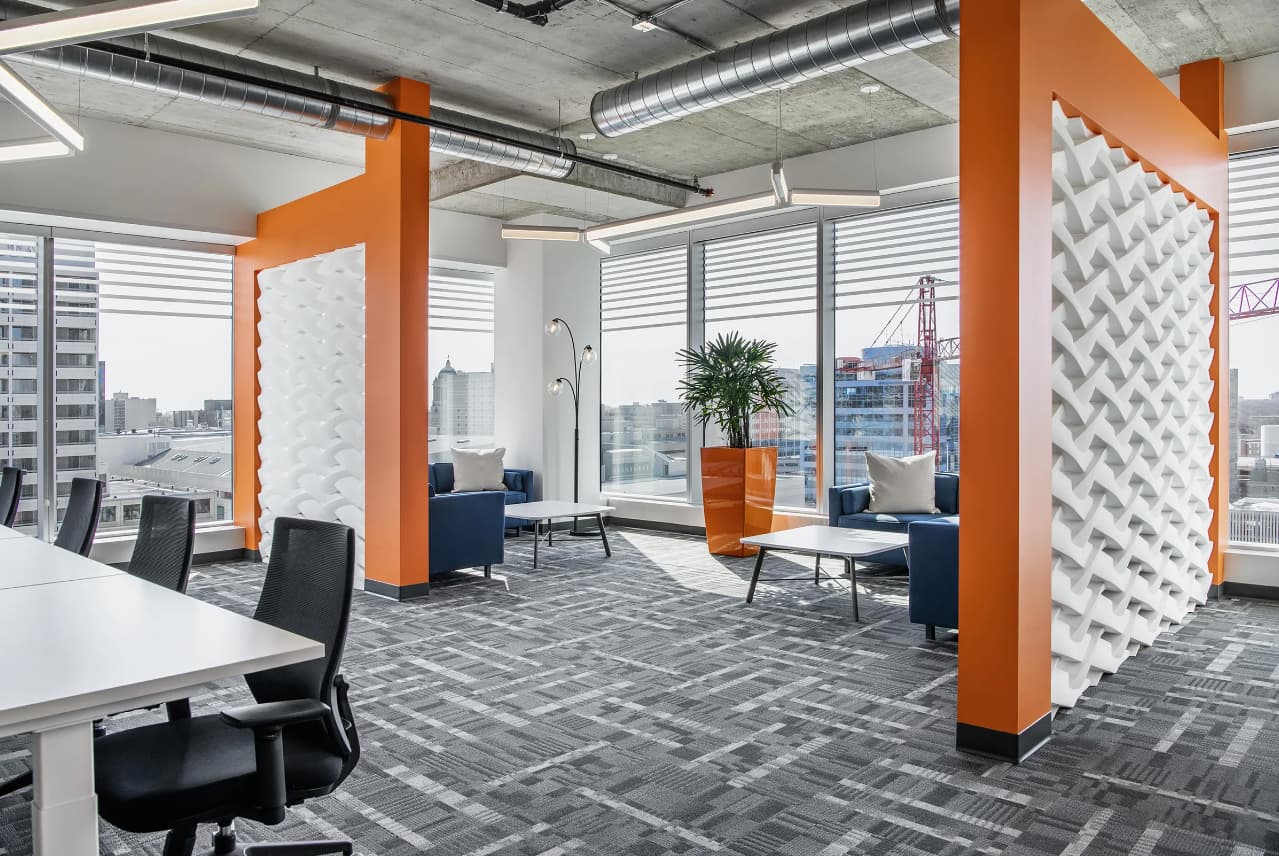Which one of these organizations offers a better product or service: the business with a dull, lifeless office or the one with a vibrant, inspiring workplace?
This is a silly question with an obvious answer. Of course the second business will be more productive, not to mention a more attractive place to work.
We often talk about how to design office spaces in terms of improving employee wellness, boosting productivity, and stimulating collaboration and creativity.
We do this because the benefits to our business are clear. What’s not so clear, however, is the cost to our organizations if we don’t..
How Does an Uninspiring Workplace Damage an Organization?
When possible, we try to avoid focusing on the negative. In this case, doing so can help shed light on how crucial it is to design a motivating workspace.
The Corporate Leadership Council conducted a study involving 50,000 employees from 59 organizations across 14 industries, and the findings were concerning.1 The results revealed that only 11 percent of employees are highly committed to their jobs – leaving nearly 90 percent wobbling between completely uncommitted and only partially committed to their workplaces.
Now, it isn’t hard to imagine how damaging this lack of engagement is to these organizations’ bottom line. While an uninspiring work atmosphere isn’t the sole cause of these dismal numbers, it undoubtedly plays a role.
Read on to discover the true cost of an uninspiring office environment:
Absenteeism
The Conference Board of Canada and SunLife Financial conducted research which discovered the average Canadian takes more than nine sick days every year – costing the Canadian economy a staggering $16.6 billion.2 Certainly, many of these absences are due to legitimate illness. Some, no doubt, result from a lack of employee motivation and engagement.
Staff Turnover
On average, when an employee quits, business owners are out approximately 20 percent of the worker’s salary (Center for American Progress).3 This number climbs the more specialized the vacated position is. Other researchers claim the financial damage to be far greater. The Society For Human Resources Management estimates the cost is somewhere between 50-60 percent of an employee’s annual salary.4 Once accrued time off/vacation days are paid out and job advertising/interviewing costs are factored in, it’s easy to see why the number is so high.
Poor Employee Wellbeing And Morale
What about the employees who continue working for a company and even show up for work every day despite the unrewarding atmosphere? Unfortunately, they take their toll on the bottom line as well. It’s not difficult to imagine that people working in a lackluster environment will put out work that is equally dull.
And this is not to mention the mental and emotional toll on workers when other people quit or don’t show up to work consistently. The remaining employees are left to pick up the slack and wonder if staying is worth it.
Client/Customer Relationships
Finally, when every other aspect of an organization comes across poorly, existing and prospective clients will take notice. If there isn’t an incentive for them to stay, they’ll turn to the competition.
The Right Way
In 2015, LinkedIn released a list of the top 100 most in demand places to work.5 Companies like Amazon, Coca-Cola, Victoria’s Secret, and Google (no surprise here) found their way onto the list. Google is king of inspirational workplaces: offering cooking classes, coffee tastings, fitness classes, free bicycle usage and an extraordinary building to work in (affectionately called the Googleplex).
Don’t worry, no one’s expecting you to keep up with the likes of Google, but it can’t hurt to try. If affordable workout classes are what your employees are after, make that a reality; if they want a flexible work schedule, redefine the typical workweek; if a homey work atmosphere motivates them, invest in stunning artwork and stylish furniture. The point is, find out what makes your employees feel valued and what inspires them – then do it!
References
1. Driving Performance and Retention Through Employee Engagement A Quantitative Analysis of Effective Engagement Strategies [Scholarly project]. (n.d.). Retrieved September 25, 2016, from https://www.usc.edu/programs/cwfl/assets/pdf/Employee engagement.pdf
2. Stewart, Nicole. Missing in Action: Absenteeism Trends in Canadian Organizations. Ottawa: The Conference Board of Canada, 2013
3. Boushey, H., & Glynn, S. (2012, November 16). There Are Significant Business Costs to Replacing Employees. Retrieved September 28, 2016, from https://www.americanprogress.org/issues/labor/report/2012/11/16/44464/there-are-significant-business-costs-to-replacing-employees/
4. Allen, D. G., Ph.D., SPHR. (n.d.). Retaining Talent: A guide to analyzing and managing employee turnover [Scholarly project]. In SHRM Foundation. Retrieved September 25, 2016, from https://www.shrm.org/about/foundation/research/documents/retaining talent- final.pdf
5. North America’s Most InDemand Employers: 2015. (n.d.). Retrieved September 25, 2016, from https://business.linkedin.com/talent-solutions/indemand-north-america-2015


.jpg)
.jpg)
.jpg)